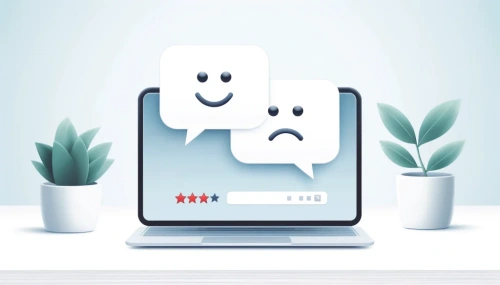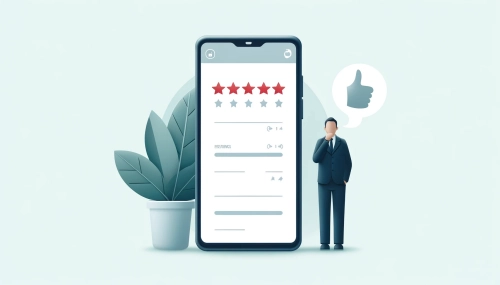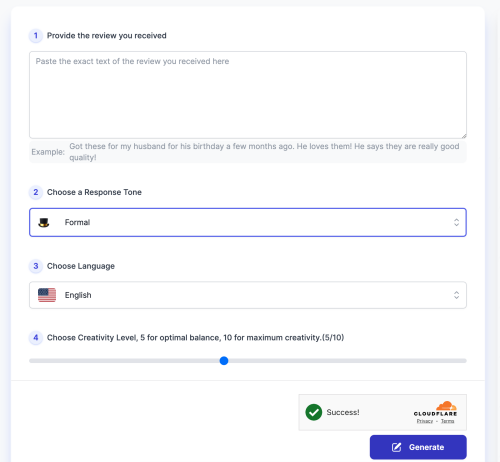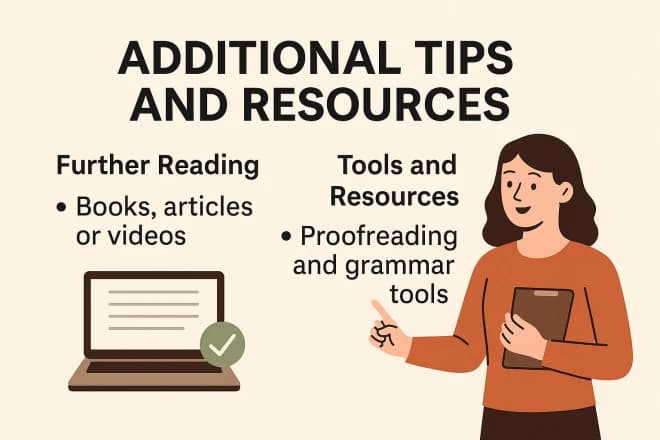Unlock Insights: Find the Answers You Seek on Our Blog
Expert Guide: Crafting the Best Response to Bad Review
By Evelyn Sterling
This article aims to provide a comprehensive guide that not only addresses how to respond to negative reviews but also how to leverage them as opportunities for brand improvement and enhanced customer engagement.
Importance of Responding to Negative Reviews
In the digital age, where opinions are shared widely and swiftly, negative reviews can significantly impact a business. Responding to these reviews is not just a courtesy but a crucial part of reputation management and customer service. Ignoring negative feedback can lead to an erosion of trust, while addressing it promptly and thoughtfully can turn potentially damaging situations into demonstrations of your commitment to customer satisfaction.
When businesses respond to negative reviews, they signal to both the reviewer and potential customers that they value feedback and are proactive about improvement. This can enhance customer loyalty, as consumers are more likely to return to a business that listens and responds to their concerns. Additionally, a well-crafted response to a negative review can often sway public opinion positively, influencing prospective customers who see that the business is engaged and responsive.
Overview of the Impact on Brand Image and Customer Relationships
The manner in which a company handles criticism is often more telling than the criticism itself. A professional and empathetic response to a negative review can substantially boost a brand’s image. It portrays the business as one that cares deeply about its customers and is committed to continuous improvement. This transparency and openness are highly valued in today’s market, where consumers have plenty of choices and value authenticity.
Moreover, the impact extends beyond the immediate interaction. Potential customers often scrutinize how a business handles negative situations before deciding to engage with it. They are looking at how conflicts are resolved, the tone of the communication, and whether the company takes responsibility for its mistakes. A positive handling of a negative situation can therefore lead to increased customer trust and loyalty, which are critical for long-term relationships.
Effective management of negative reviews also plays a vital role in customer retention. It provides an opportunity to win back dissatisfied customers by addressing their concerns in a way that exceeds their expectations. This not only improves the relationship with the individual customer but also leads to positive word-of-mouth, as customers often share their experiences with their network, further influencing the brand’s reputation.
In summary, the significance of responding to negative reviews cannot be overstated. It is an essential strategy for maintaining a positive brand image, enhancing customer relationships, and fostering an environment of trust and reliability that can drive business growth and success.

Understanding the Reviewer’s Perspective
Emphasizing Empathy and the Significance of Understanding Customer Concerns
Empathy is the cornerstone of any effective response to a negative review. It involves more than just recognizing the issues presented; it requires placing oneself in the customer’s shoes and genuinely understanding their feelings and frustrations. This approach not only helps in formulating a more sincere and effective response but also demonstrates to the customer—and to all who read the review—that the business cares about its customers’ experiences.
To practice empathy effectively, businesses should strive to listen actively to the complaint, acknowledge the discomfort or inconvenience caused, and express genuine regret. This does not necessarily mean agreeing with the customer’s every point, but acknowledging their feelings is crucial in deescalating potential conflict and moving towards a resolution. A response that reflects understanding and care can significantly soften the impact of the initial negative review.
Examples of Common Themes in Negative Reviews and What They Might Indicate About Your Business
Negative reviews often cluster around a few common themes, each of which can provide valuable insights into potential areas of improvement for a business:
- Product or Service Quality: Complaints in this category might indicate issues with product durability, effectiveness, or user satisfaction. It’s essential for businesses to address these concerns by assuring customers of their commitment to quality and detailing any steps taken to improve the product or service.
- Customer Service: Reviews critical of customer service can reflect perceptions of staff being rude, unhelpful, or unresponsive. Such feedback is particularly damaging as it directly affects brand reputation and customer loyalty. Responding to these reviews provides an opportunity to apologize and demonstrate improved service standards.
- Value for Money: If customers feel that they are not receiving good value, they may express dissatisfaction with pricing, portions, or the overall worth of the product or service. Here, businesses can explain the value of their offerings and, if necessary, reevaluate their pricing strategies or value proposition.
- Operational Issues: Complaints about long wait times, cleanliness, or other operational aspects suggest areas where logistical improvements could enhance the customer experience. Addressing these complaints in responses should involve acknowledging the issue and outlining specific changes implemented to address the concern.
- Miscommunication or Misunderstanding: Sometimes, a negative review may stem from a customer misunderstanding a policy or product feature. Such instances should be addressed by providing clear, helpful information in the response and ensuring that all public-facing information is clear and accessible to prevent future misunderstandings.
By identifying these common themes, businesses can not only respond more aptly to each negative review but also implement systemic changes that prevent future complaints. Each negative review, therefore, serves as a direct line of feedback that, when used judiciously, can significantly enhance the business’s operations and customer satisfaction levels.
Essentials of Crafting a Professional Response
Immediate Acknowledgment of the Review
One of the key aspects of responding effectively to a negative review is the promptness of your reply. A swift response demonstrates to the reviewer and other customers that your business is attentive and committed to resolving issues quickly. Ideally, businesses should aim to respond within 24 to 48 hours. This not only limits the amount of time the negative review sits unaddressed, potentially influencing other customers, but it also shows that the business prioritizes customer feedback and is eager to resolve any issues.
Apologizing Sincerely Where Necessary
When a customer’s dissatisfaction stems from a legitimate shortfall in service or product quality, a sincere apology is crucial. It’s important to express regret not just for the inconvenience caused, but also for not meeting the expectations that you as a business have set. Your apology should be heartfelt and specific to the issues raised in the review. Avoid generic or scripted apologies as they can often seem insincere and may even exacerbate the customer’s frustration.
A well-phrased apology might include specific acknowledgments of the problem reported and any inconvenience caused, thereby reinforcing the business’s commitment to high standards and customer satisfaction. Here is an example: “We sincerely apologize for the delay you experienced and understand the inconvenience this caused. It’s important to us that our customers receive timely services, and we fell short in this instance.”
Offering to Rectify the Situation or Providing an Explanation, as Appropriate
After acknowledging the issue and apologizing, the next step is to address the problem. If the situation can be rectified, offer a solution. This might involve a refund, a replacement, or another compensatory measure. Providing a remedy not only helps in regaining the customer’s trust but also demonstrates your commitment to righting the wrongs.
If the issue raised in the review stems from a misunderstanding or circumstances beyond your control, provide a clear and respectful explanation. It’s important to clarify any misconceptions without being defensive. Your response should help the customer understand the situation better and mitigate any negative feelings. However, ensure that your explanation still aligns with an empathetic tone and an offer to assist further if needed.
For example, if a customer complains about a policy that they misunderstood, your response could be: “Thank you for bringing this to our attention. I’m sorry for any confusion caused by our policy. To clarify, [insert a brief explanation of the policy]. We understand this may have been unclear, and we are here to help with any further questions or concerns you might have.”
By mastering these essentials—quick acknowledgment, sincere apology, and offering solutions or explanations—you set a professional tone that can turn negative reviews into opportunities for demonstrating excellent customer service and potentially winning back dissatisfied customers.

Reply Templates and Phrases to Use
Specific Words and Phrases that Convey Empathy, Understanding, and Responsiveness
Effective communication in response to negative reviews often hinges on the choice of words and phrases that convey genuine empathy and understanding. Here are some key phrases that can be included in your replies:
“We understand how frustrating it must be to…”
“We truly appreciate your feedback and are taking it seriously.”
“We can see why you’d feel disappointed, and we’re here to make things right.”
“Thank you for bringing this to our attention.”
“It’s clear we’ve fallen short, and for that, we are truly sorry.”
“We’re committed to ensuring this doesn’t happen again.”
These phrases help to establish a connection with the customer by acknowledging their feelings and showing that the business is responsive and cares about resolving issues.
Templates for Different Scenarios
1. Product Issues:
“Dear [Customer Name],
Thank you for your feedback. We understand how disappointing it can be when a product does not meet your expectations. We apologize for any inconvenience this may have caused. We would like to learn more about the issue and see how we can resolve it for you. Please contact us at [contact information] at your earliest convenience, so we can make this right. We’re committed to delivering quality products, and your satisfaction is incredibly important to us.
Thank you for your understanding,
[Your Name/Your Company’s Name]”
2. Service Delays:
“Hello [Customer Name],
Thank you for your patience and for bringing this issue to our attention. We’re very sorry to hear about your experience with the delay in our service. This is not the level of service we aim to provide, and we understand your frustration. We are currently investigating what may have caused this delay and are implementing measures to ensure it does not happen again. If there’s anything we can do to assist you further, please let us know. Your satisfaction is our priority.
Best regards,
[Your Name/Your Company’s Name]”
3. General Dissatisfaction:
“Hi [Customer Name],
We’re sorry to hear that your experience did not match your expectations. This is on us. We would love to understand better what happened and how we can win back your trust. At your convenience, please reach out to us at [contact information], and we would be happy to resolve any issues as quickly as possible. Thank you for your feedback, as it helps us improve and serve you better.
Sincerely,
[Your Name/Your Company’s Name]”
These templates can be adjusted based on the specific details of each situation and the tone that matches your brand’s voice. By using empathetic language and showing a willingness to resolve issues, you can effectively manage negative reviews and potentially turn dissatisfied customers into advocates for your business.
Do’s and Don’ts When Responding to Negative Feedback
Responding to negative feedback requires a careful balance of diplomacy and sincerity. Here’s a guideline on what to include and what to avoid to ensure your responses are constructive and respectful.
Do’s:
- Do Acknowledge the Complaint: Always start by acknowledging the reviewer’s complaint and thanking them for their feedback. This shows that you value customer input and are open to making improvements.
- Do Apologize Sincerely: If the complaint is valid, offer a genuine apology. An apology can go a long way in diffusing anger and beginning the process of rebuilding trust.
- Do Offer a Solution: Whenever possible, offer a solution to the problem or let the customer know what steps you are taking to prevent the issue from occurring again. If immediate action is not possible, inform the customer that their complaint has been escalated and provide a timeline for the expected resolution.
- Do Keep it Professional: Maintain a professional tone throughout. This includes using proper grammar, avoiding slang, and being courteous, regardless of the tone of the review.
- Do Personalize the Response: Tailor your response to the specific issues raised. Generic responses can make it seem like you didn’t truly understand or care about the customer’s specific concerns.
Don’ts:
- Don’t Ignore the Review: Ignoring negative feedback can send the message that you don’t value customer input or care about their concerns. It can also deter potential customers who see that complaints are not addressed.
- Don’t Get Defensive: Avoid being defensive. Even if you disagree with the review, keep your response focused on addressing the customer’s concerns rather than justifying your actions.
- Don’t Blame the Customer: Never blame the customer or make the customer feel at fault. This can escalate the situation and lead to further negativity, both from the individual and from others who read the exchange.
- Don’t Discuss Personal Details Publicly: If resolving the issue requires sharing sensitive information or details, ask the customer to contact you privately through email or phone. This protects the customer’s privacy and moves the conversation out of the public eye.
- Don’t Make Unverifiable Promises: Be careful not to make promises you can’t keep just to placate the customer. This can lead to greater dissatisfaction if those promises are not fulfilled.
By following these dos and don’ts, you can craft responses that not only address the immediate concerns raised in negative reviews but also contribute to an overall positive reputation management strategy. This approach not only helps in resolving individual complaints but also builds a reputation for excellent customer service that can attract new customers and retain existing ones.
Turning Negative Reviews into Opportunities
Negative reviews are not just challenges; they are also valuable opportunities for learning and growth. By leveraging the insights they provide, businesses can significantly enhance their products, services, and overall customer experience.
Strategies for Using Negative Feedback to Improve Products, Services, and Customer Experiences
- Identify Patterns: Regularly review negative feedback to identify any recurring issues or patterns. This can help pinpoint areas that need improvement, whether it’s a specific product feature, an aspect of customer service, or an operational procedure.
- Integrate Feedback into Product Development: Use the constructive criticism from reviews as direct input for product development. For example, if multiple reviews mention that a product is difficult to use, consider this in your design and development process to make the product more user-friendly.
- Enhance Training Programs: If customer service is a frequent area of complaint, use specific examples from reviews during training sessions to teach customer service representatives how to handle similar situations better in the future.
- Adjust Policies and Procedures: Sometimes, negative reviews reveal flaws in business policies or procedures that might not be apparent from the inside. Use this feedback to reevaluate and adjust those policies to be more customer-centric.
- Implement a Recovery Strategy: Develop a strategy for recovering dissatisfied customers. This might include follow-up calls or emails to ensure that their issues have been resolved to their satisfaction, offering discounts or refunds where appropriate, and asking for feedback on the resolution process.
How to Involve the Whole Team in Feedback Loops and Continuous Improvement Processes
- Regular Feedback Sessions: Hold regular meetings where different teams can discuss recent feedback. This helps ensure everyone is aware of current customer sentiments and can contribute ideas for improvement.
- Cross-Functional Teams: Create cross-functional teams to address complex issues that span multiple areas of the business. For example, a team made up of product developers, customer service agents, and marketing professionals can provide a holistic approach to solving a problem highlighted by negative reviews.
- Empower Employees: Empower all employees to respond to feedback and implement small changes without needing excessive approvals. This can increase the speed and effectiveness of responses and make employees feel more invested in the process of improving customer satisfaction.
- Celebrate Improvements: When changes made in response to customer feedback result in positive outcomes, share these successes with the whole team. This not only boosts morale but also reinforces the value of listening to and acting on customer feedback.
- Incorporate Feedback into KPIs: Make customer feedback a key performance indicator for relevant teams. This ensures that responding to and learning from customer feedback is prioritized as part of their regular duties and responsibilities.
By turning negative reviews into a resource for continuous improvement, businesses can not only resolve individual customer issues but also make systemic changes that prevent future problems. This proactive approach not only improves the quality of the products and services offered but also strengthens the overall brand reputation, fostering a culture of excellence and customer-centricity.
Examples of Successful Responses to Negative Reviews
Effective responses to negative reviews can turn potentially damaging situations into opportunities for showcasing customer service excellence and strengthening brand loyalty. Here are some case studies and insights into how successful responses have improved customer satisfaction and brand perception.
Case Study 1: Restaurant Industry
- Situation: A popular restaurant received a negative review regarding a long wait time and unsatisfactory service during a busy evening.
- Response: The restaurant manager quickly responded with a personalized apology and explanation. They acknowledged the customer’s frustration and explained that it was an unusually busy night that had overwhelmed their staff. The manager offered a discount on the customer’s next visit and invited them to a special event aimed at showcasing their commitment to quality service.
- Outcome: The customer was appreciative of the response and took up the offer, returning to a much better experience on a quieter night. They updated their review to reflect the positive follow-up experience, and this exchange was noticed by other reviewers, enhancing the restaurant’s reputation for attentive customer service.
- Insight: Prompt and sincere apologies combined with tangible rectification offers can effectively turn a dissatisfied customer into a loyal one, improving overall customer retention and public perception.
Case Study 2: E-commerce
- Situation: An online retailer received several negative reviews about a particular product that was not meeting customer expectations due to quality issues.
- Response: The retailer responded publicly to apologize and announced immediate quality checks and updates to their product line. They offered refunds and replacements to dissatisfied customers and updated their product description to better set expectations.
- Outcome: Customers who received replacements or refunds often went back to update their reviews, applauding the company’s quick action and customer focus. This also reassured potential customers about the company’s commitment to quality and customer satisfaction.
- Insight: Proactively addressing product issues and maintaining transparency about steps taken to resolve them can significantly bolster trust and loyalty, even in the face of initial disappointment.
Case Study 3: Software Services
- Situation: A software company faced critical reviews about bugs in their latest update, which affected user experience.
- Response: The company promptly acknowledged the issues in a detailed response, thanking customers for their feedback and outlining their immediate plan to fix the bugs. They kept the community updated through their forums and social media about the progress being made.
- Outcome: Customers appreciated the regular updates and visible efforts to resolve the issues quickly. Once the bugs were fixed, the company received positive feedback for their transparency and dedication to creating a reliable product.
- Insight: Effective communication and ongoing engagement during a crisis are crucial for maintaining user trust and loyalty, especially in technology-related industries.
These case studies illustrate that thoughtful and responsive handling of negative reviews can lead to improved customer satisfaction, enhanced brand loyalty, and even turning critics into advocates. Each example shows that with the right approach, businesses can effectively use negative feedback as a stepping stone towards greater success.
Integrating AI Review Response Generators in Managing Reviews
Introduction to AI Review Response Generator
AI Review Response Generator is a tool designed to help businesses efficiently manage and respond to customer reviews. This AI-powered technology automates the creation of personalized responses to user reviews, whether they are positive or negative. The generator typically uses natural language processing (NLP) to understand the sentiment and content of a customer’s review and then crafts a suitable response that aligns with the company’s brand voice and customer service policies.
How to Use the AI Review Response Generator
Using the AI Review Response Generator involves a few simple steps, as demonstrated in the provided screenshot:
- Provide the Review You Received: First, you input the exact text of the review into the tool. This is the base content that the AI will analyze to understand the context and sentiment of the feedback.
- Choose a Response Tone: Next, you select the desired tone of the response. Options typically include tones like formal, casual, apologetic, cheerful, etc. Choosing the right tone ensures that the response matches the nature of the review and your brand’s communication style.
- Choose Language: You also have the option to select the language in which you want the response to be crafted. This is particularly useful for businesses that operate in multilingual environments or serve international customers.
- Choose Creativity Level: This setting allows you to determine how creative or straightforward the response should be. A higher creativity level might be used for more engaging responses, while a lower level might be suitable for more formal or serious issues. This scale typically runs from a lower value (more direct and simple responses) to a higher value (more nuanced and creatively crafted responses).
- Generate the Response: After all parameters are set, you click the ‘Generate’ button. The AI uses the provided information to create a suitable response that you can then review and, if necessary, tweak before posting it publicly.
By automating the response process, this tool not only saves time but also helps maintain a high standard of customer service by ensuring consistent, thoughtful, and personalized communication. This is crucial for maintaining a positive online reputation and enhancing customer satisfaction.
Benefits of Using AI Review Response Generator
- Consistency in Responses: AI tools can maintain a uniform tone and quality in responses, which helps in upholding the brand’s voice across all communications. This consistency is crucial for businesses that receive a high volume of reviews.
- Efficiency: AI response generators can drastically reduce the response time by automatically generating replies to common queries and feedback. This allows customer service teams to focus on more complex and sensitive issues that require personal attention.
- Scalability: For businesses that operate on a large scale, manually responding to every review can be unfeasible. AI tools can scale according to the influx of reviews, ensuring timely responses during high traffic periods without additional staffing costs.
AI Tools Categories
Browse all AI tools by category
All AI Tools
229Amazon
5AI Writing Generator
85Article & Content Writing
35Branding & Identity
54Content Generation
170Creative Ideas
32Educational Resources
34E-commerce
14Etsy
6Events & Celebrations
13Facebook
6Gaming & Fun
5Instagram
3Lifestyle & Personal
8LinkedIn
6Marketing & SEO
40Poem & Lyrics Writing
19Professional Documents
31Social Media
44Story & Book Writing
49Text Effects
14TikTok
7Twitter
3Writing Enhancement
36YouTube
11
Highly rated and most popular AI tools curated by our experts
Recently added AI tools that are gaining traction
- AI Post Generator

- AI Bullet Point Generator

- AI Discussion Post Generator

- AI 2 Weeks Notice Letter Generator

- AI Content Creation Ideas Generator

- AI Radio Ad Script Generator

- AI Podcast Script Generator

- AI Resume Objective Generator

- AI Resume Headline Generator

- AI Password Generator

- AI Snapchat Caption Generator

- AI Snapchat Username Generator

- AI Pinterest Board Name Generator

- AI LinkedIn Experience Description Generator

- AI Twitter Hashtag Generator

- AI YouTube Short Idea Generator

we prioritize displaying the latest content closely related to the current blog post.








